
The budget presented before the Parliament on Wednesday displays a firm commitment of the government on two major areas of concern - it addresses the issue of higher allocation in the areas that need urgent attention and it continues to walk on the path of tough fiscal consolidation.
The absence of any grand scheme (such as the proposal of a Universal Benefit Income scheme doing the rounds) shows that the finance minister has made prudent choices rather than being a populist.
It seems that Finance Minister Arun Jaitley has rightly managed the impact of demonetisation - the budget has lowered the tax rates for individuals and also has given a boost to MSME companies by lowering corporate tax on them. These measures will relieve some of the pain.
On the other hand, according infrastructure status to affordable housing and changing the definition of affordable housing for profit-linked tax benefits will get the ball rolling in housing - probably the biggest sector affected by the cash crunch.
However, Jaitley's target of achieving 3.2% fiscal deficit in 2017-18 will hinge on two major pillars - increased tax collection and ability to sell a stake in government companies.
In the budget 2016-17 total disinvestment target was placed at Rs 56,500 crore and in the revised one the estimates had been brought down to Rs 45,500 crore.
However, for the budget 2017-18, the target has been kept at Rs 72,500 crore, a 59% increase as compared to revised estimates. For higher tax revenue, the finance minister is relying on better tax compliance and widening of the tax base.
Individual tax payers
Due to a change in tax rate for this income slab, all taxpayers with income below Rs 5 lakh will be benefited by a lower tax liability to the extent of Rs12,500.
However, the new levy surcharge of 10% on income levels between Rs 50 lakh and Rs 1 crore will result in an additional tax liability by almost Rs 2.77 lakh at the top-end of this income range.
Education, Skills & Jobs
The budget has made a sincere attempt to address all aspects of employment and employability. With secondary schools, the minister has proposed the introduction of a system of measuring annual learning outcome to promote creativity through local innovative content.
The budget has proposed undertaking reforms in the UGC that will enable quality institutions to have greater administrative and academic autonomy.
It has also proposed the launching of an online platform called Swayam enabling students to virtually attend at least 350 courses taught by the best faculty, access high-quality reading resources, participate in discussion forums, take tests and earn academic grades.
On skill development, Arun Jaitley has expanded the scope of Pradhan Mantri Kaushal Kendras from the current 60 to cover more than 600 districts across the country. He said 100 India International Skills Centres will be established across the country.
Jaitley also announced that a programme SANKALP (Skill Acquisition and Knowledge Awareness for Livelihood Promotion Programme) will also be launched at a cost of Rs 4,000 crore. SANKALP will provide market-relevant training to 3.5 crore youth.
India's biggest anti-poverty scheme, the Mahatma Gandhi National Rural Employment Guarantee Act or MNREGA, has been given its highest allocation ever of Rs 48,000 crores in this budget.
Increasing the budget for MNREGA could help compensate the rural poor, hit hardest by the cash shortage that followed the demonetisation drive.
Digital Economy
Promotion of digital economy will help clean up the system, weed out corruption and black money, and the government will soon launch an Aadhar-based payment system to promote digital transactions for people living in hinterlands, Jaitley said on Wednesday.
"A merchant enabled Aadhar payment system will be launched shortly. This will specially be beneficial to those who do not have debit cards, mobile wallets or mobile phones," Jaitley said in his budget speech.
"This, in turn, is expected to energise private investment in the country through lower cost of credit. India is now at the cusp of a massive digital revolution. A shift to the digital platform has huge benefits to the common man," Jaitley said.
Further, a mission will be set up with a target of over 2,500 crore digital transactions for 2017-18 through UPI, USSD, Aadhar Pay, IMPS and debit cards. Also, banks have targeted to introduce an additional 10 lakh point-of-sale terminal by March 2017.
On the other hand, the government removed all duties on devices used in the process of cashless transactions like the point-of-sales machines, fingerprint readers etc.
Jaitley said in his budget speech, "To promote cashless transactions, I propose to exempt BCD (basic custom duties), excise duties, CVD (countervailing duties), SAD (special additional duty) on miniaturised card readers and mPOS micro atms standards for version 1.5.1, finger print readers, scanners and iris scanners."
Women & Child Development
For the welfare of women and children, the budget allocation has been increased from Rs 1,56,528 crore in 2016-17 to Rs 1,84,632 crore in 2017-18.
It also proposed the setting up of Mahila Shakti Kendrsa at the village-level with an allocation of Rs 500 crores in 14 lakh ICDS Anganwadi Centres.
Jaitley said that these centres will provide one stop convergent support services for empowering rural women with opportunities for skill development, employment, digital literacy, health and nutrition.
Fiscal Deficit
Despite an increase of 8% on total expenditure (the first budget that abolished the practice of plan and non-plan expenditure being mentioned separately in budget estimates), the budget pegged the fiscal deficit for 2017-18 at 3.2% of GDP and further commitment to achieve 3% in 2018-19.
The total expenditure for 2017-18 has been kept at Rs 21.47 lakh crore compared to a budget estimate of Rs 19.78 lakh crore in 2016-17.
However, the expenditure as percentage of GDP is showing a decline. The total expenditure of the government is estimated at 12.7% of GDP as against 13.4% of GDP in the revised estimates of 2016-17.
Prudent spending has also resulted into lower net borrowing from the markets. As per the budget documents, the government will borrow Rs 3.48 lakh crore from the market in the next year, compared to Rs 4.25 lakh estimated in 2016-17.
Lower borrowing by government will have double effect - it will allow banks to lend to private players more and will also reduce interest payments for the government.
Edited by Jhinuk Sen
First published: 14 February 2017, 8:21 IST

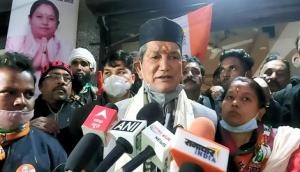
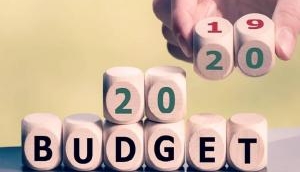
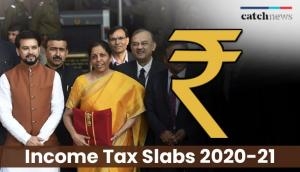
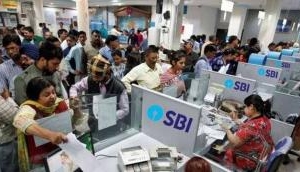
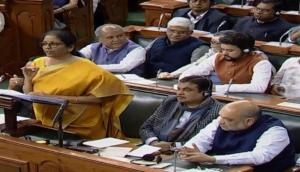
![BJP's Kapil Mishra recreates Shankar Mahadevan’s ‘Breathless’ song to highlight Delhi pollution [WATCH] BJP's Kapil Mishra recreates Shankar Mahadevan’s ‘Breathless’ song to highlight Delhi pollution [WATCH]](https://images.catchnews.com/upload/2022/11/03/kapil-mishra_240884_300x172.png)

![Anupam Kher shares pictures of his toned body on 67th birthday [MUST SEE] Anupam Kher shares pictures of his toned body on 67th birthday [MUST SEE]](https://images.catchnews.com/upload/2022/03/07/Anupam_kher_231145_300x172.jpg)






